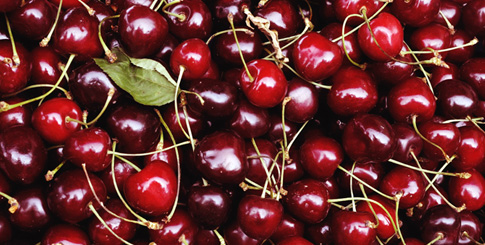As the new season approaches, take a dive into the cherry industry as growers talk varieties and yields, receivers prep for the crop, and retailers get set to market the perfect fruit snack.
High Demand & Big Yields
The cherry industry is coming off a high, with more than 1 billion pounds produced in both 2014-15 and 2016-17, with 2017-18 predicted to go even higher. Growers faced the usual jittery moments during the early part of the season, but most are faring well.
Scott Marboe, marketing director for grower-shipper Oneonta Trading Corporation in Wenatchee, WA is excited about the new season. The sky, it seems, is the limit. “We keep selling more and we keep producing more.” The numbers tell a clear story of the rise: in 2000, cherry production was valued at $327.5 million, and in 2016 that number had more than doubled at $862.4 million.
James Michael, vice president of marketing for North America for the Washington State Fruit Commission, credits “improvements in market development, consumer education, and health research” for rising domestic and international demand.
For Aaron DeHerrera of Rainier Fruit Company in Yakima, WA, quality had the most influence. “Consumers responded positively to the excellent quality this past season with strong demand and return purchases,” he observes. And, grower-shippers are counting on this double-sided trend to continue for the upcoming season. “With the volume of newer plantings coming into production, we really rely on repeat purchases.”
The strong yields, however, did cause one concern for growers and receivers, what Ray Norwood, director of sales and marketing for Auvil Fruit Company, Inc. in Orondo, WA, called a “glut in supply after the Fourth of July” in both domestic and export markets, resulting in “a substantial drop in selling price.” And although the lower pricing may have dismayed suppliers and retailers, it was a boon for consumers.
Willing Weather
Last season was blessed with good weather and no significant temperature swings or extreme events. “This last year (2016-17) was a super year—the best year we’ve seen in a long time,” enthuses Mike Jameson, marketing director for Morada Produce Company, L.P., in Linden, CA near Stockton.
Dick Reiman, president of River City Produce Sales, a distributor and shipper from Sacramento, CA, concurs. “We had a really good wet, cold winter and got through bloom and harvest with no rain, so last season was a good season for us.”
Since cherries require a combination of weather elements, not all varieties fare as well, with some requiring greater chill hours than others. “Chill and a wet winter like last year are important,” agrees Jameson. Even though November was marked with warmer temperatures, he says, “December is the most important month to get the chill we need for a season with strong trees.”



